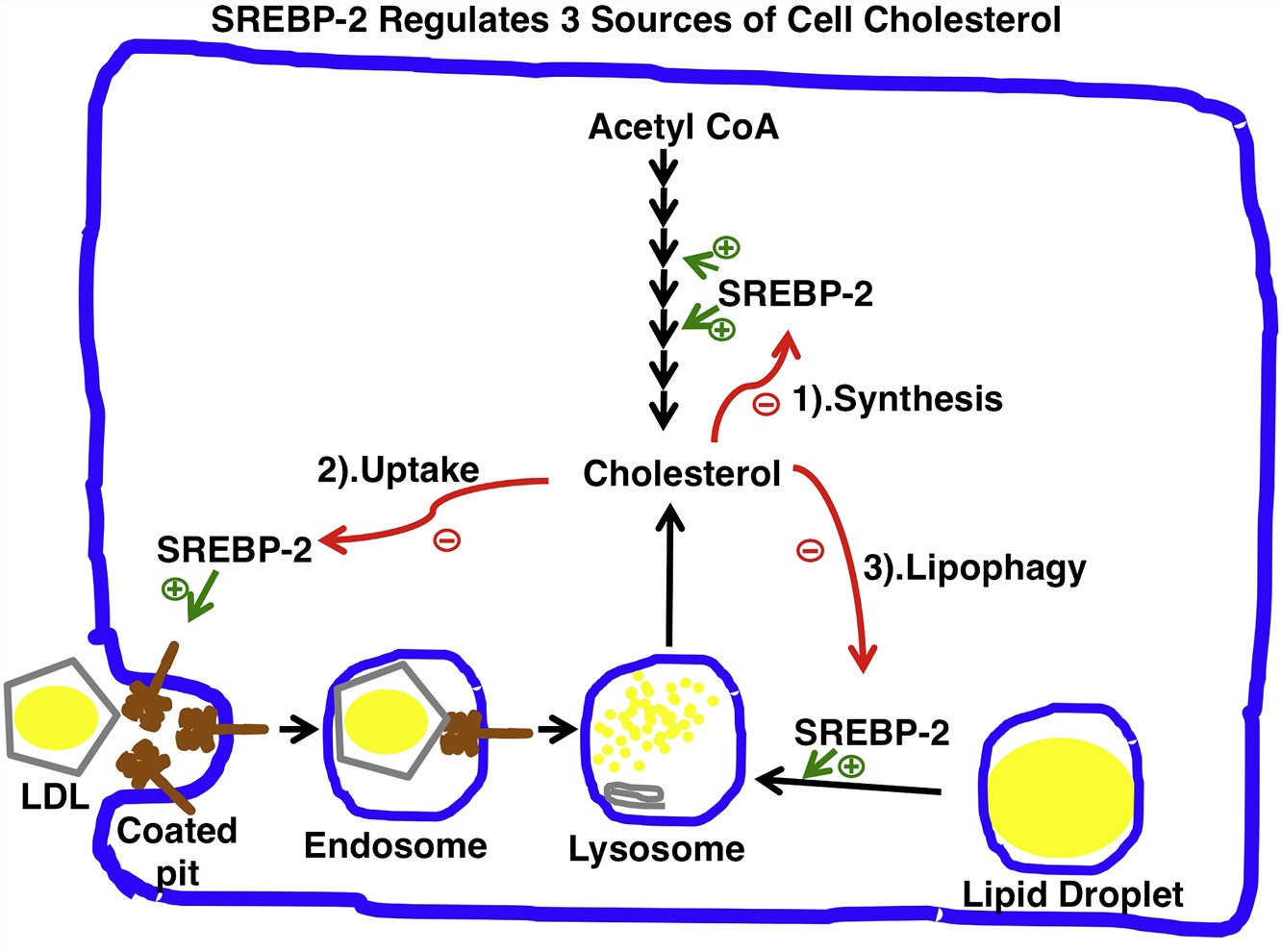NASH Target Development Service for SREBP2 Inhibitors
Over years of investigations and accumulations, Creative Biolabs now provides comprehensive NASH therapeutic services to global clients based on our exclusive drug discovery platform and experience.
What is SREBP2?
Sterol regulatory element-binding protein 2 (SREBP-2) is an important transcription factor of fatty and sterol homeostasis. SREBP-2, together with other family proteins (including SREBP1a, SREBP1c), are basic helix-loop-helix leucine zipper (bHLH-Zip) proteins that mainly regulate the synthesis and cellular uptake of cholesterol and fatty acids, which are major components of cell membranes. SREBP-2 usually anchors to the endoplasmic reticulum (ER) when intracellular cholesterol is abundant. When cholesterol content decreases, SREBP-2 releases from the ER, activates cholesterol uptake from plasma into intracellular, increases the level of intracellular cholesterol and decreases the level of plasma low-density lipoprotein (LDL), which is achieved by binding to the sterol regulatory element 1 (Sre-1) (5’-ATCACCCCAC-3’) of in the flanking region in the LDL receptor. On the other hand, SREBP-2 activates cholesterol biosynthesis through upregulating genes expressions, such as hydroxymethylglutaryl-CoA (HMG-CoA) synthase and mevalonate kinase (MVK).
 Fig.1 SREBP-2 Regulates 3 Sources of Cell Colesterol. (Seo, 2011)
Fig.1 SREBP-2 Regulates 3 Sources of Cell Colesterol. (Seo, 2011)
SREBP2 Inhibitors for NASH Treatment
Recently, increasing investigations have indicated that the pathogenesis of NASH mainly resulted from hepatic free-cholesterol accumulation in livers, among which SREBP-2 might be the key factor that has pleiotropic effects on lipid homeostasis of the liver. SREBP-2 can induce lipotoxicity in NASH by modulation in several ways.
- In hepatocytes and adipocytes, SREBP-2 promotes cholesterol synthesis and uptake by increasing the expression of HMG-CoA reductase, squalene synthase, and LDL receptor.
- SREBP-2 could increase StAR-related lipid transfer protein 4 (StARD4) expression and result in mitochondrial free cholesterol accumulation in hepatocytes and adipocytes.
- SREBP-2 induces activation and fibrogenesis of hepatic stellate cells through increasing LDL receptor-mediated cholesterol uptake.
- SREBP-2 also enhances pro-inflammatory adipokines production and thereby causes adipose tissue dysfunction.
- The selective splicing of SREBP-2 encoded gene SREBP-2 produces microRNA 33a (miR-33a), which mainly functions to promote liver injury and fibrogenesis by decreasing cholesterol excretion while increasing cholesterol accumulation transforming growth factor-β (TGFβ) mediated HSC activation.
These adverse effects of SREBP-2 and miR-33a on cholesterol metabolism, however, make SREBP-2 a potential therapeutic target. Antagonists that selectively target or inhibit hepatic SREBP2 and miR-33a expression are promising candidates in terms of NASH treatment. Several molecules are being developed such as curcumin, proanthocyanidins, and resveratrol.
 Fig.2 miR-33a collaborates with SREBP-2 to maintain cellular lipid homeostasis. (Bommer, 2011)
Fig.2 miR-33a collaborates with SREBP-2 to maintain cellular lipid homeostasis. (Bommer, 2011)
With years of experience and high-end technologies in target identification for drug discovery, Creative Biolabs can provide a diversity of NASH treatment services with the highest quality and professional expertise. Based on well-established platforms (e.g. Hit to Lead, Lead Optimization, IND-Enabling, Target Identification and Validation, Hit identification), Our scientists will offer you custom and optimized solutions based on your requirements. If you have any special needs in NASH services, please feel free to contact us for more details.
References
- Seo, Y.K.; et al. Genome-wide Localization of SREBP-2 in Hepatic Chromatin Predicts a Role in Autophagy. Cell Metabolism. 2011, 4(13): 367-375.
- Bommer, G.T.; MacDougald, O.A. Peroxisome proliferator-activated receptors associated with nonalcoholic fatty liver disease. Cell Metabolism. 2011, 13(3): 241-247.
 For Research Use Only.
For Research Use Only.